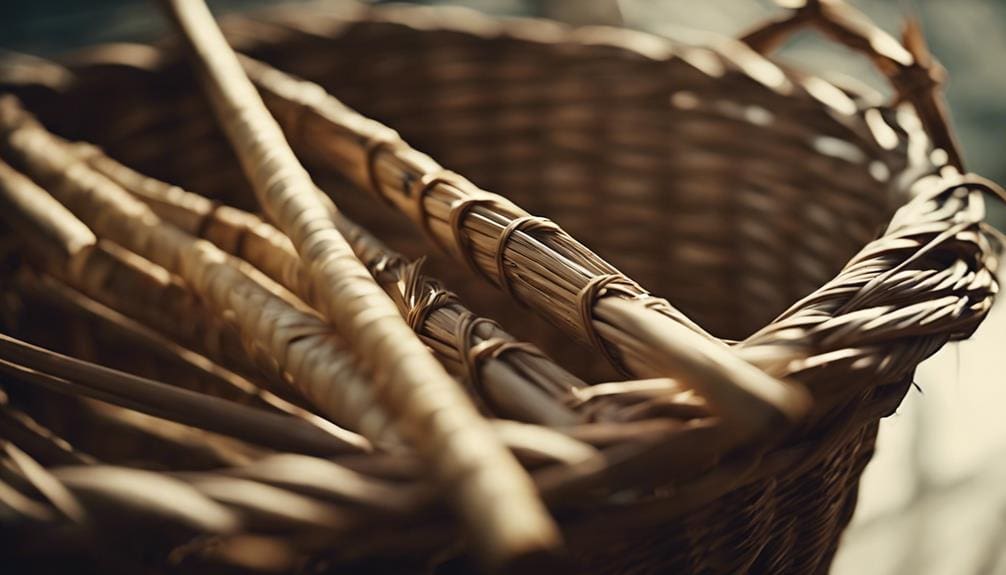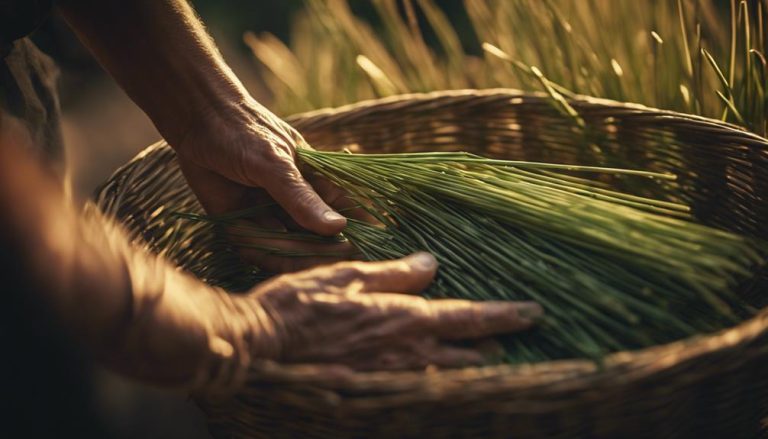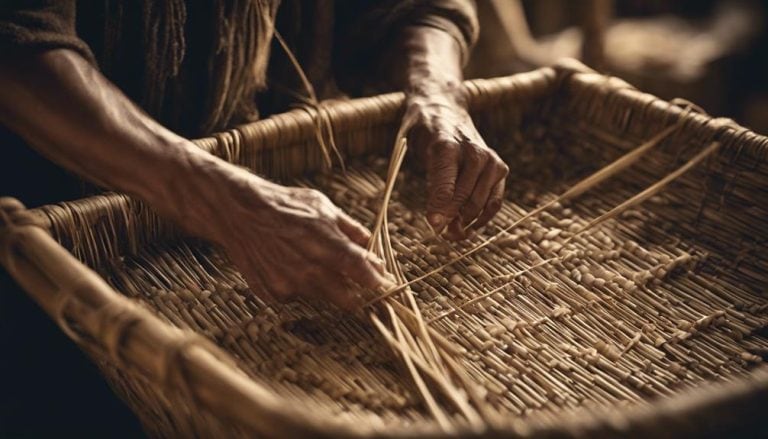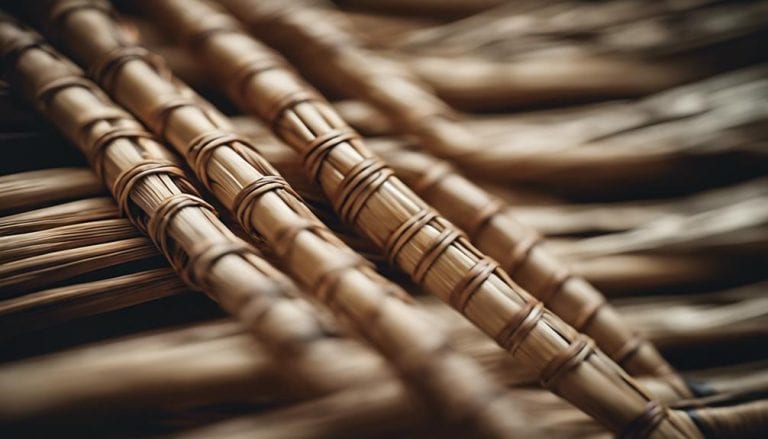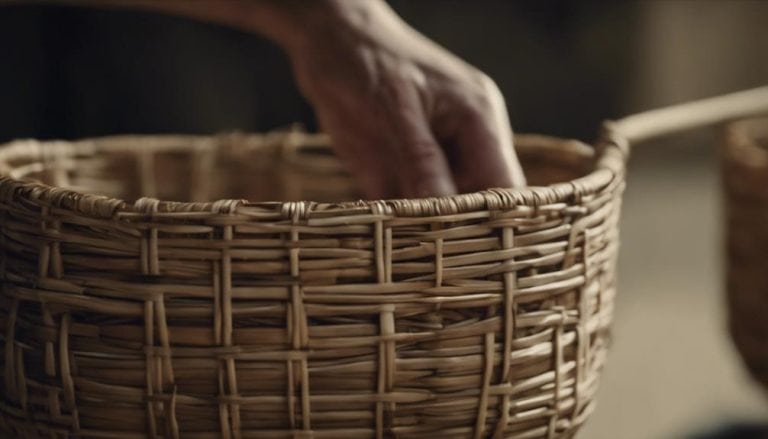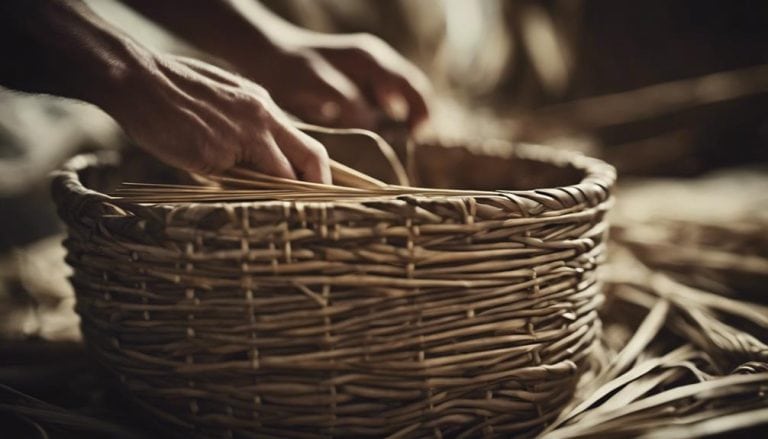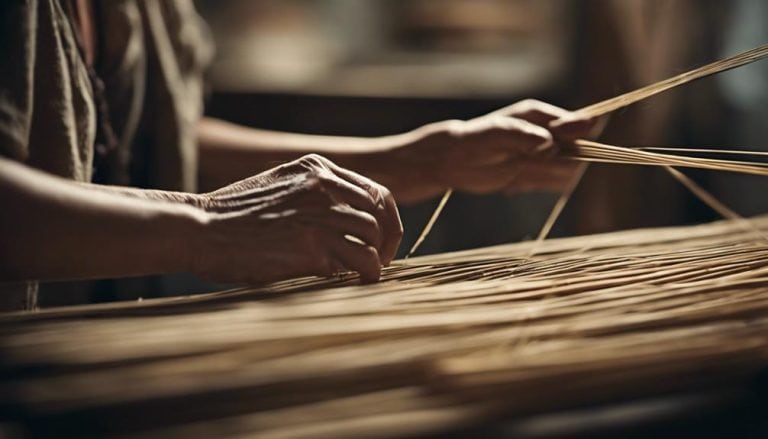Rush Reeds: A Key Material in Basketry
Like threads of tradition woven through time, rush reeds stand as foundational elements in basketry, offering a glimpse into a world where nature’s bounty meets human creativity. The intricate process of harvesting and weaving rush reeds unfolds a story of resilience and ingenuity that captivates artisans and enthusiasts alike.
From their historical significance to contemporary applications, rush reeds’ journey in basketry is a tapestry waiting to be explored. It reveals secrets of craftsmanship and cultural heritage that continue to shape our modern world.
“Rush reeds are essential for basketry, providing flexibility and strength for weaving intricate designs.” For its versatility and durability, artisans favor this natural material in creating beautiful baskets.
Key Takeaways
- Rush reeds are vital for basket weaving, offering flexibility and durability.
- Harvested sustainably, rush reeds support quality craftsmanship and ecosystem health.
- Artisans utilize rush reeds’ properties to create functional and artistic woven pieces.
- Rush reeds enable diverse weaving techniques, fostering creativity and cultural basket-making connections.
History of Rush Reeds in Basketry
The utilization of rush reeds in basket weaving traces back to ancient civilizations, marking a rich and enduring tradition in basketry. Cultural significance is deeply intertwined with the history of rush reeds, as they have played a pivotal role in the artistic evolution of basket weaving across diverse cultures. From the intricate patterns of ancient Egyptian baskets to the sturdy structures crafted by Mesopotamian artisans, rush reeds have been a foundational material in creating functional yet aesthetically pleasing woven goods.
Over centuries, the art of basketry has evolved alongside the use of rush reeds, with artisans continually pushing the boundaries of creativity and innovation. The cultural significance of rush reeds lies in their practicality and the artistic expression they enable. As artisans honed their skills and techniques, the intricate weaving patterns and emerging designs showcased the artistic evolution fueled by the versatility of rush reeds. This enduring tradition highlights the deep connection between culture, art, and the natural materials used in basket weaving.
Properties of Rush Reeds
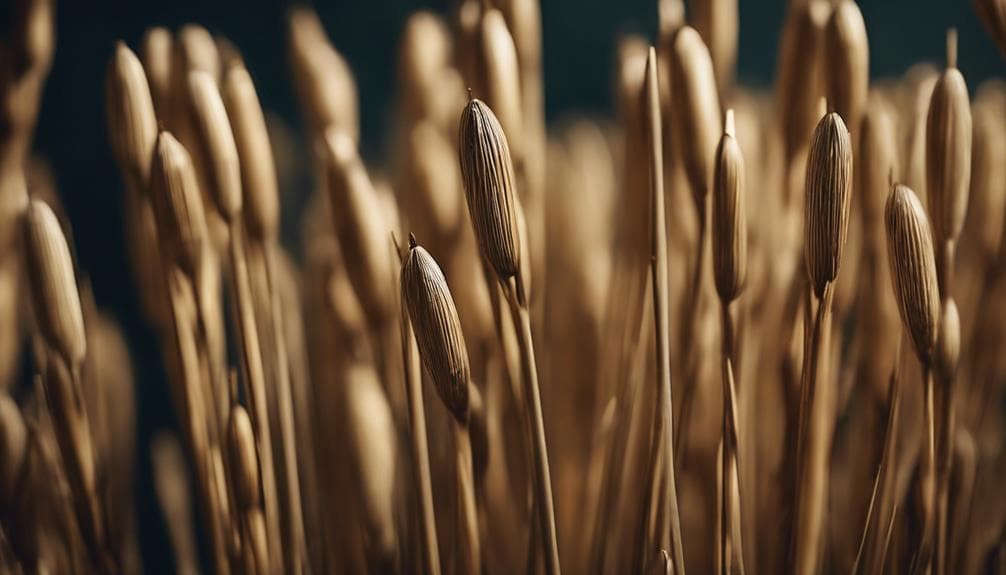
Rush reeds, integral to the historical evolution of basket weaving, possess a unique combination of properties that make them highly sought after in the craft. These versatile materials, derived from various rush plant species like sweetgrass and cattails, are known for their flexibility and strength. They offer a range of textures and colors for weaving. Their durability and resilience make rush reeds ideal for creating sturdy and long-lasting baskets. The flexibility of these reeds enables weavers to explore intricate designs and patterns, unlocking the artistic possibilities inherent in these materials.
Considering the environmental impact, it is crucial to harvest rush reeds sustainably to ensure the continued availability of this essential basketry material and to preserve natural ecosystems. By understanding and respecting the source of rush reeds, we can contribute to conserving these plants and the habitats they support, ensuring a sustainable future for basket weaving.
Harvesting and Processing Rush Reeds
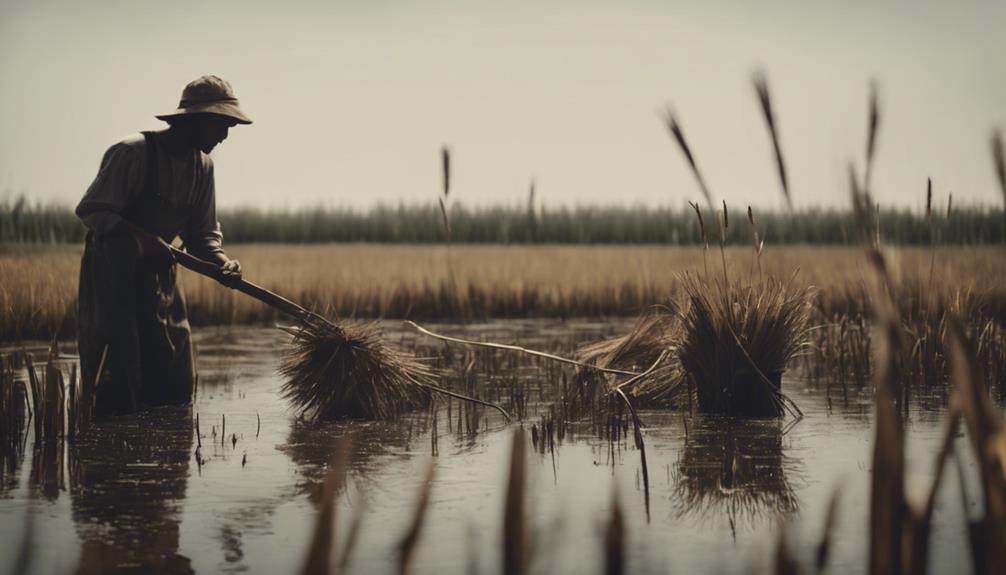
Harvesting and processing rush reeds involve meticulous techniques to ensure the quality and flexibility required for weaving durable baskets and woven products. Rush reeds are commonly harvested in wetland areas such as marshes and riverbanks during late spring or early summer to guarantee peak quality.
The harvesting process demands careful cutting and collection to obtain long, straight stems suitable for weaving. After harvesting, rush reeds undergo a crucial processing stage that includes thorough drying to prevent mold growth and maintain the necessary flexibility for weaving. Sustainability practices and conservation efforts are vital during harvesting to ensure the long-term availability of rush reeds.
Traditional craftsmanship meets modern innovations in processing techniques, allowing for the creation of high-quality, durable baskets and woven products. The table below concisely overviews the key steps in harvesting and processing rush reeds.
| Harvesting and Processing Rush Reeds | |
|---|---|
| Harvesting Season | Late spring to early summer |
| Processing Technique | Thorough drying for flexibility |
| Key Considerations | Sustainability and quality control |
Weaving Techniques With Rush Reeds
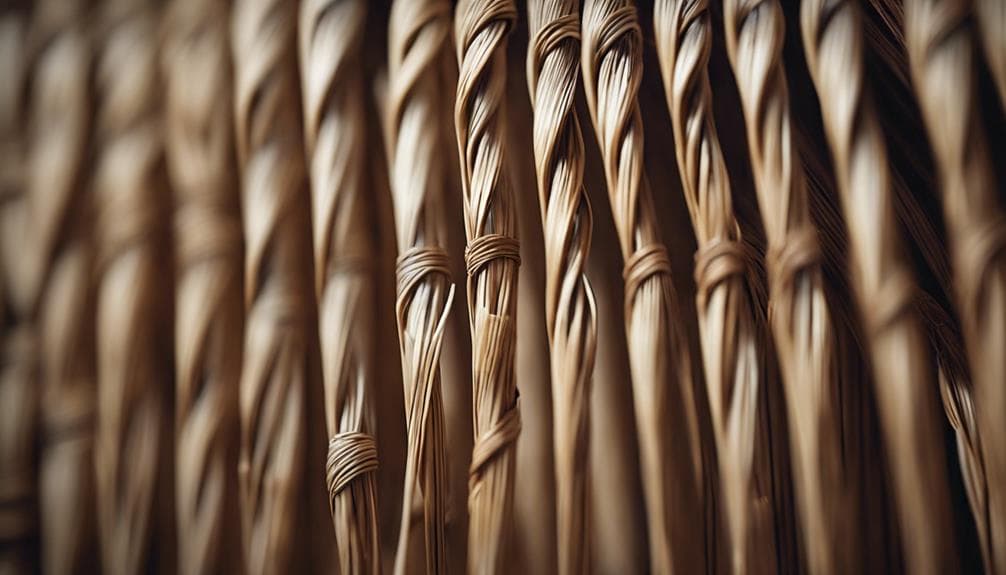
Crafting with rush reeds involves mastering intricate weaving techniques to produce durable and visually appealing baskets. The weaving techniques with rush reeds often revolve around coiling patterns and twining styles. Coiling consists of wrapping the rush reeds around a core material, creating a sturdy and structured base for the basket.
Weavers can experiment with different coiling patterns to add complexity and visual interest to their baskets. Conversely, twining involves weaving two strands of rush reeds together in a twisting motion, resulting in a flexible and intricate weave. Weavers can create unique textures and designs in their baskets by mastering various twining styles.
The combination of coiling patterns and twining styles allows for endless creativity and customization in basket making. Weavers can play with different techniques, incorporating dyed rush reeds to introduce color variations and enhance the visual appeal of their creations. With their flexibility and strength, Rush reeds serve as a versatile material for exploring a wide range of weaving techniques and design possibilities.
Design Inspirations With Rush Reeds
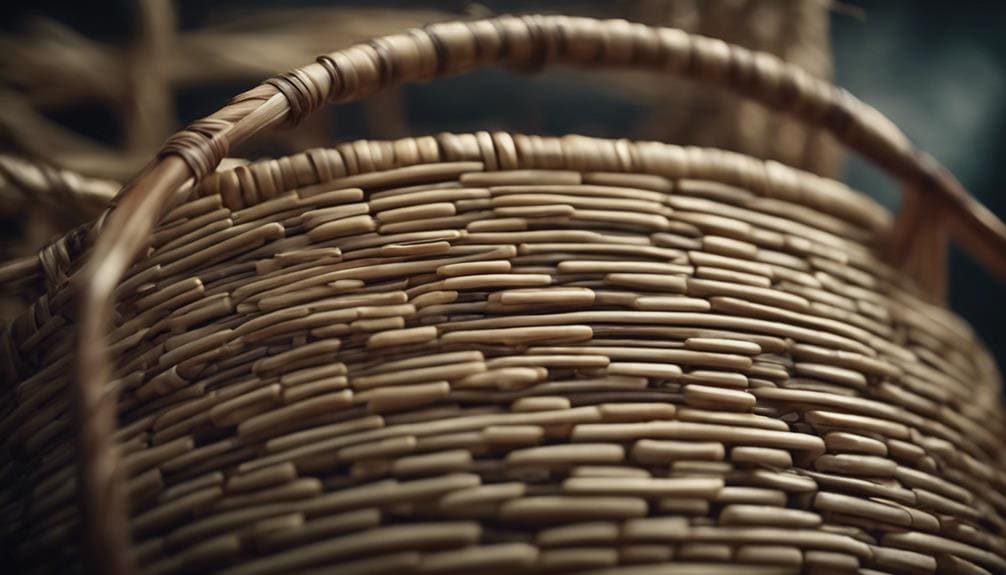
Exploring design inspirations with rush reeds involves drawing from a rich tapestry of traditional and contemporary basket weaving techniques to create visually captivating and structurally sound pieces. When working with rush reeds, artisans have many options to play with. By incorporating colorful patterns and artistic shapes, the designs can truly come to life.
Rush reeds’ flexibility allows for intricate patterns to be woven, making each piece unique. The natural color variations in rush reeds add depth to the designs, enhancing the visual interest of the baskets. Additionally, the ability to dye rush reeds in various colors opens up endless possibilities for creative and customizable designs.
Whether sticking to traditional patterns or experimenting with modern artistic shapes, rush reeds provide a versatile medium for artisans to express their creativity and craft visually stunning pieces.
| Colorful Patterns | Artistic Shapes |
|---|---|
| Vibrant hues blending harmoniously | Intricate weaves creating unique forms |
| Varied color gradients for depth | Geometric patterns for modern appeal |
| Customizable dye options for personal touch | Organic shapes inspired by nature |
| Traditional motifs with a contemporary twist | Abstract designs pushing boundaries |
| Symmetrical patterns for balance | Three-dimensional structures for depth |
Maintenance and Care of Rush Reed Baskets
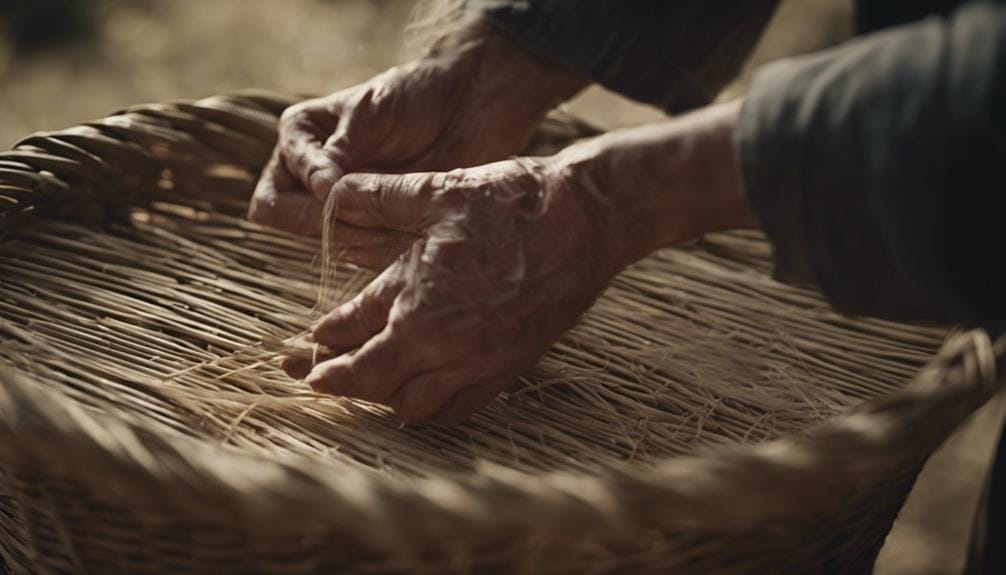
When maintaining rush reed baskets, protecting them from direct sunlight is essential to prevent color fading and material weakening while ensuring longevity. To keep these baskets looking their best, regular dusting with a soft brush or cloth is recommended. This simple step helps maintain their appearance without causing any damage. Additionally, it is crucial to avoid exposing rush reed baskets to extreme temperature changes, as this can lead to warping or cracking over time.
For cleaning techniques, gently spot clean rush reed baskets with a damp cloth and mild soap for spills or stains. It is important to dry them thoroughly afterward to avoid any water damage. Store rush reed baskets in a dry and well-ventilated area to prevent mold growth. This will help preserve the integrity of the baskets and avoid any unwanted issues.
Regarding storage solutions, ensuring a controlled environment can greatly extend the life of rush reed baskets. Following these maintenance and care tips, you can enjoy your rush reed baskets for years.
Contemporary Applications of Rush Reeds
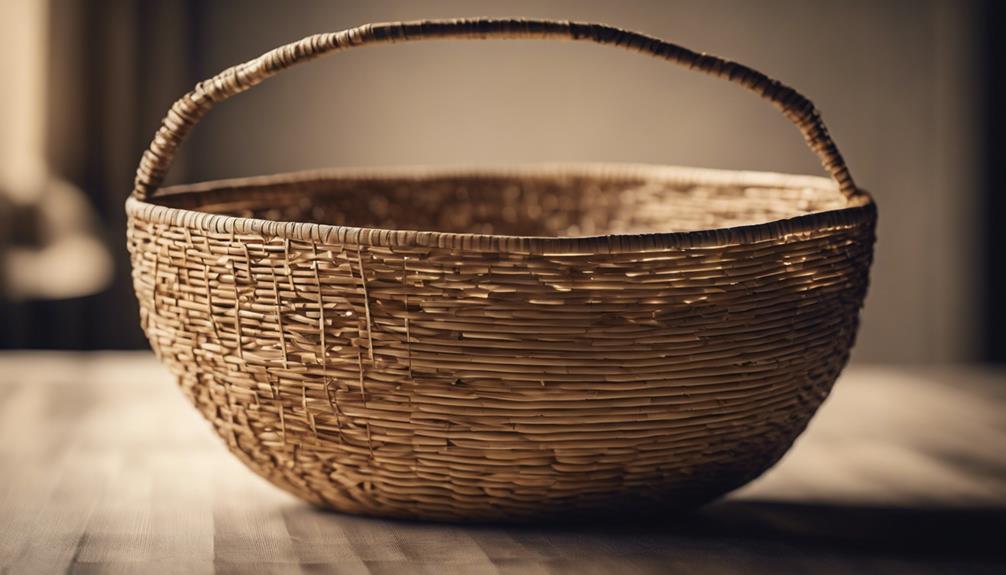
In contemporary basket weaving, artisans widely utilize rush reeds for their exceptional flexibility and durability, making them a staple material in creating functional and decorative pieces. Rush reeds offer a unique opportunity for creativity in basketry, allowing for exploring innovative patterns and creative structures.
Artisans twist, twine, or coil rush reeds to form intricate designs that showcase the natural color and texture of the material. The versatility of rush reeds enables the crafting of baskets that not only serve practical purposes but also serve as stunning decorative pieces. Sustainable harvesting practices ensure a continuous supply of rush reeds, supporting ongoing basket weaving projects and preserving the environment.
By incorporating rush reeds into contemporary basket weaving, artisans can push the boundaries of traditional techniques, creating modern pieces that resonate with a desire for liberation and artistic expression.
| Patterns | Structures |
|---|---|
| Intricate designs | Creative forms |
| Geometric shapes | Functional styles |
| Abstract motifs | Artistic weaves |
Frequently Asked Questions
What Reeds Are Used in Basketry?
In basketry, reed varieties like sweetgrass, cattails, and Oregon Iris leaves are utilized. Weaving techniques with these materials showcase sustainable sourcing and cultural significance. Exploring the diverse uses of reeds enriches traditional practices.
What Is the Major Material Used for Basket Weaving?
Bamboo weaving is a prevalent technique in crafting wicker baskets. Pine needles and seagrass are also commonly utilized in making intricate designs. Each material brings a unique texture and aesthetic to the final woven product.
Why Are the Baskets Made of Reeds?
Crafting with rush reeds offers numerous benefits. The baskets made from them are durable, lightweight, and visually appealing. Their flexibility allows for intricate designs. Being eco-friendly, rush reeds contribute to sustainable practices and symbolize tradition and craftsmanship.
How Long to Soak Reeds for Basket Weaving?
I soak rush reeds for basket weaving for at least 24 hours to ensure flexibility and durability. Longer soaking, up to 48 hours, benefits thicker reeds. Cold water prevents premature softening and makes weaving easier. Proper preparation leads to well-crafted baskets.
Conclusion
As I carefully weave the rush reeds into intricate patterns, I can’t help but feel a deep connection to the generations before me who mastered this craft. The strength and beauty of these natural materials remind me of my ancestors’ resilience and creativity. Preserving these traditional techniques honors our heritage and ensures the sustainability of our environment. The art of basketry with rush reeds is a timeless treasure worth cherishing.

